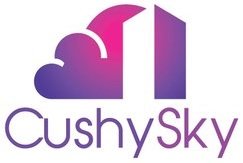Executive Summary:
As more enterprises migrate their business-critical systems to Oracle Cloud, a rich body of lessons is emerging across industries and sectors. From hands-on project experience, Oracle Consulting leadership insights, user-experience analytics providers, and major transformation journeys by organizations like Taylor Corp, AMC Theatres, and the City of Tampa, this paper synthesizes what has worked, what challenges have emerged, and how future cloud adopters can chart a smarter path forward.
1. Cloud Migration Is Not Just a Technical Project – It’s a Business Transformation
Successful Oracle Cloud migrations require a shift in mindset across the organization. Jenn Warpinski of Taylor Corporation emphasized that Oracle Cloud projects are not mere upgrades, but transformative opportunities to modernize operations, unify processes, and drive cultural change.
What Worked Well:
-
Leadership-driven vision, visible at all levels
-
Cross-functional engagement, especially with non-IT stakeholders
-
Clear articulation of how the cloud enables employees to work better, faster, and easier
Challenges Observed:
-
Treating the migration as an IT-only effort
-
Overlooking change management as a strategic discipline
Takeaway: Start by aligning stakeholders around a shared transformation vision. Invest early in communication, leadership engagement, and user readiness.
2. One Size Doesn’t Fit All: Strategy and Sequencing Matter
One organization that lifted-and-shifted its on-premise Oracle environment to OCI later realized it had missed opportunities to optimize cost and functionality. Choosing a blanket migration approach for all components led to higher post-migration effort.
What Worked Well:
-
Component-by-component evaluation of modernization options
-
Phased, prioritized migration based on user adoption metrics
Challenges Observed:
-
Migrating legacy components like backup systems without exploring native OCI alternatives
-
Failing to plan for procedural reengineering pre-migration
Takeaway: A selective, insight-driven migration strategy that considers both IT and employee usage data leads to faster ROI and fewer post-migration surprises.
3. Simplicity Wins: Standardization and Prescriptive Approaches Reduce Complexity
The City of Tampa reduced implementation costs by 30% and completed its Oracle Cloud ERP/HCM/SCM rollout in 10 months by eliminating 8,500 customizations and embracing Oracle Consulting’s prescriptive framework.
What Worked Well:
-
Adopting out-of-the-box functionality instead of replicating legacy customizations
-
Following Oracle Soar’s methodology and templates
Challenges Observed:
-
Custom-heavy approaches that prolong timeline and increase support burden
Takeaway: Resist the urge to rebuild old ways in the cloud. The closer you stay to standard cloud functionality, the faster you can go live and scale value.
4. Human Factors Trump Technical Milestones
Even when technical migrations succeed, projects can fail from a business perspective if user adoption lags. Analytics providers observed that poorly supported transitions can diminish productivity, especially in remote work environments.
What Worked Well:
-
Prioritizing applications based on employee usage patterns
-
Investing in training and self-service support grounded in analytics
-
Empowering internal help desks with real-time usage insights
Challenges Observed:
-
Assuming employees will adapt without structured enablement
-
Measuring success only in technical terms (e.g., go-live date)
Takeaway: Migrations must be people-centric. Support digital proficiency, measure adoption impact, and make continuous user improvement a post-migration priority.
5. Automation and Native Tools Amplify Efficiency
Post-migration teams have reported significant gains using tools like Ansible with OCI modules. These automation capabilities streamline environment management, reduce manual overhead, and make operations more repeatable.
What Worked Well:
-
Replacing manual procedures with automated OCI-native playbooks
-
Leveraging tools like Oracle EBS Cloud Manager (with caveats)
Challenges Observed:
-
Failing to evaluate automation potential during planning
-
Allowing migration utilities to overwrite existing management frameworks without review
Takeaway: Reimagine operations during migration planning. Automation isn’t just a bonus — it’s foundational to unlocking cloud ROI.
6. Choose Partners Who Bring Strategy, Speed, and Staying Power
From AMC Theatres to Tampa to Taylor Corp, a recurring theme is the value of the right cloud migration partner. These companies cited Oracle Consulting’s prescriptive guidance, 24/7 access, and long-term commitment as key enablers of success.
What Worked Well:
-
Deep advisory support across planning, adoption, and innovation phases
-
Ongoing access to expertise beyond go-live
Challenges Observed:
-
Partners without ownership of long-term outcomes
-
Fragmented advisory models lacking continuity
Takeaway: Don’t just pick a vendor. Choose a cloud transformation partner who is vested in your long-term business goals.
Conclusion: Turning Lessons into Strategy
Oracle Cloud migrations are high-stakes undertakings with immense potential. But success isn’t defined by a go-live date alone. It’s defined by whether your teams can work better, your processes can scale smarter, and your costs can be contained sustainably.
CushySky helps clients incorporate these hard-won lessons into practical migration strategies. From cloud readiness assessments to post-migration employee enablement, our experience spans the technical and the human, the pre-migration planning and the post-migration optimization.
Are you preparing for an Oracle Cloud migration or struggling to realize ROI post go-live? Let’s talk.


